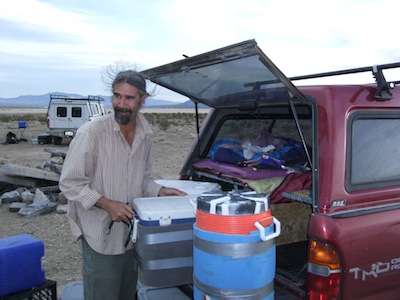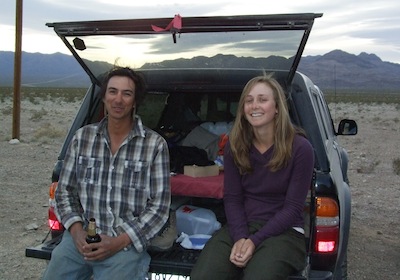Big wind and solar buildouts spur a “bio-boom” in the California desert

By Sarah McBride
I’ve reported on bubbles in plenty of stocks and commodities, but my springtime visit to the Ivanpah Valley was the first I’d heard anyone talk about a bubble in field biologists. The guy who used those words, Alex Mach, is a field biologist himself — and he was only half kidding.
Mach is one of dozens of field biologists who are out in the desert working to protect threatened animals and plants from solar and wind development projects. They’ve tapped into the rich vein of desert tortoises, whose habitats coincide with many of the areas scientists say are best positioned for solar plants — including Mach’s worksite at the time, BrightSource Energy’s solar plant in Ivanpah Valley, near the California-Nevada border.

But it’s not just tortoises. Kit foxes, kangaroo rats, and several species of lizards all need monitoring if an alternative-energy plant is headed into their habitats. I visited a small group of field biologists near Mojave, who were surveying to see if the rare Mohave ground squirrel lives on a proposed wind-farm site. (They asked me not to disclose the name of the big wind-energy company, because they didn’t have permission to show a journalist around.) They plan to spend months checking traps stuffed with oats and peanut butter. So far, they’ve found only everyday squirrels.
The work is so attractive the biologists don’t mind spending months at a time living out of their trucks. The paychecks are a factor, but they say the bigger draws are the community, freedom and chance to work outside.
Could Mach be right? Proposed plants are fighting for limited financing, which means we could be living through the field biology equivalent of tulipmania or the tech bubble. At least your retirement savings likely aren’t invested in desert tortoises.
Sarah McBride is a former freelance journalist, now working for Thomson Reuters. Her companion radio feature to this post airs today on The California Report weekly magazine.
